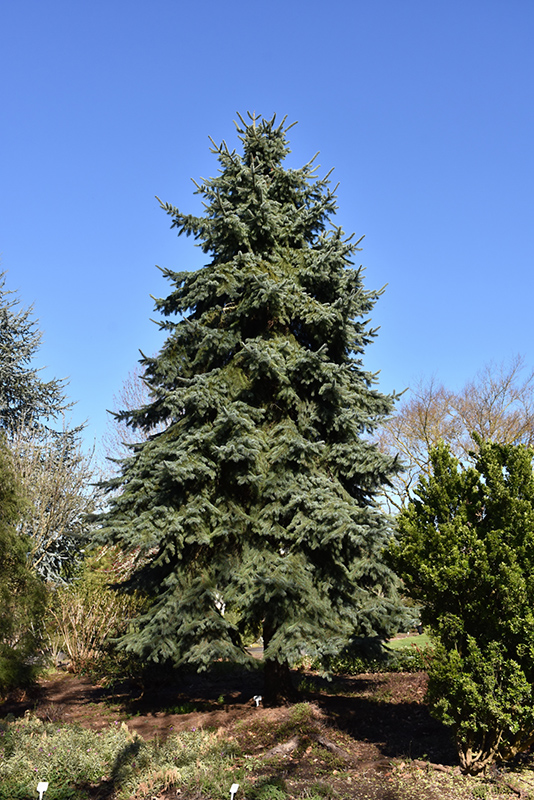Height: 70 feet
Spread: 15 feet
Sunlight:
![]()
Hardiness Zone: 2a
Other Names: Silver Spruce, White Spruce, Mountain Spruce
Description:
An impressive, narrowly conical variety, with horizontal to lightly cascading branches from a strong central leader; powder blue new foliage matures to gray-green; a great tree for adding vertical interest to the landscape skyline
Ornamental Features
Engelmann Spruce is primarily valued in the landscape for its distinctively pyramidal habit of growth. It has grayish green foliage with hints of silver which emerges powder blue in spring. The needles remain grayish green throughout the winter. The brown fruits are held in cones from late summer to late fall. The fruit can be messy if allowed to drop on the lawn or walkways, and may require occasional clean-up. The rough brick red bark adds an interesting dimension to the landscape.
Landscape Attributes
Engelmann Spruce is a dense evergreen tree with a strong central leader and a distinctive and refined pyramidal form. Its relatively fine texture sets it apart from other landscape plants with less refined foliage.
This is a relatively low maintenance tree. When pruning is necessary, it is recommended to only trim back the new growth of the current season, other than to remove any dieback. It has no significant negative characteristics.
Engelmann Spruce is recommended for the following landscape applications;
- Accent
- Vertical Accent
Planting & Growing
Engelmann Spruce will grow to be about 70 feet tall at maturity, with a spread of 15 feet. It has a low canopy, and should not be planted underneath power lines. It grows at a slow rate, and under ideal conditions can be expected to live for 70 years or more.
This tree should only be grown in full sunlight. It is very adaptable to both dry and moist growing conditions, but will not tolerate any standing water. It is not particular as to soil type or pH. It is somewhat tolerant of urban pollution. Consider applying a thick mulch around the root zone in winter to protect it in exposed locations or colder microclimates. This species is native to parts of North America.

